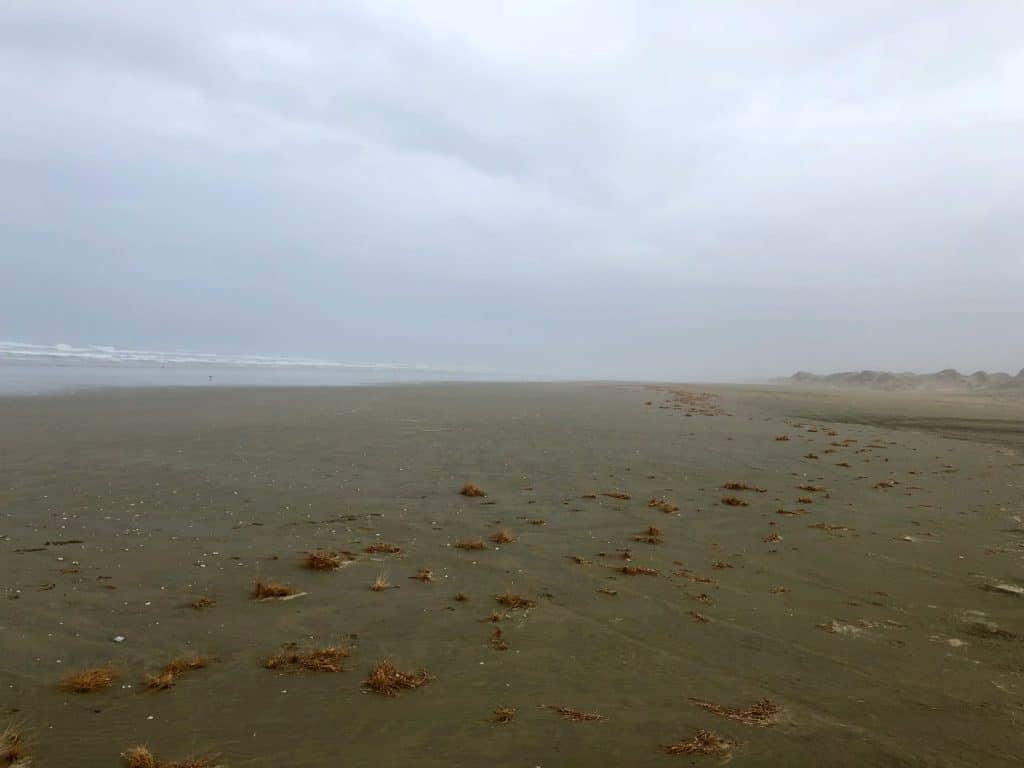
Hukatere, the camp ground we stayed at last night, means wind driven foam in Maori. For the 800 or so years people have lived in Aotearoa — ours was the last large land mass to be discovered and settled by humans — what we now call the Tasman Sea was so vigorously alive, and the algae so bountiful, the waves and wind whipped up a green foam from them.
The foam was frequent and plentiful when Gabrielle took ownership of the camp ground 22 years ago. Now it’s not, she told us visitors from home and abroad yesterday afternoon and evening as we sat around discussing all manner of things.
Likewise, there are few seabirds these days, noted my friend Kennedy Warne, who is riding the first four days of Tour Aotearoa with me back to Auckland. Kennedy is a renowned journalist on ecological, wilderness, NZ history and other subjects. We both contribute to Radio NZ’s Nine to Noon programme. Kennedy raced ahead of me down the beach yesterday so he could get to Hukatere and its phone signal in time for his contribution to yesterday’s programme. Along the way he passed the rotting carcass of a large whale. We have many such strandings on our beaches.
Local ecosystems are seriously stressed in other ways too, as they are in other ways all around the country. For example, over the past few years a number of extensive irrigated avocado orchards have been planted on the sandy soil on the east cost of the Cape Reinga isthmus around Houhora, only a dozen km or so from the west coast we’ve ridden down on 90 Mile beach. Some scientists and locals are greatly concerned the irrigation will rapidly drain the ancient aquifer, to the great detriment of local ecosystems. The local council’s granting of the water extraction permits has been strongly contested.
As we rode today, we saw another sign of the stress. Kauri dieback disease is spreading rapidly through the forests of these magnificent native trees. The fungus appeared only in recent years and is still poorly understood by scientists. Although some walking tracks have been closed, the main effort at prevention is to have people scrub their boots with disinfectant provided at the start and finish of the track.
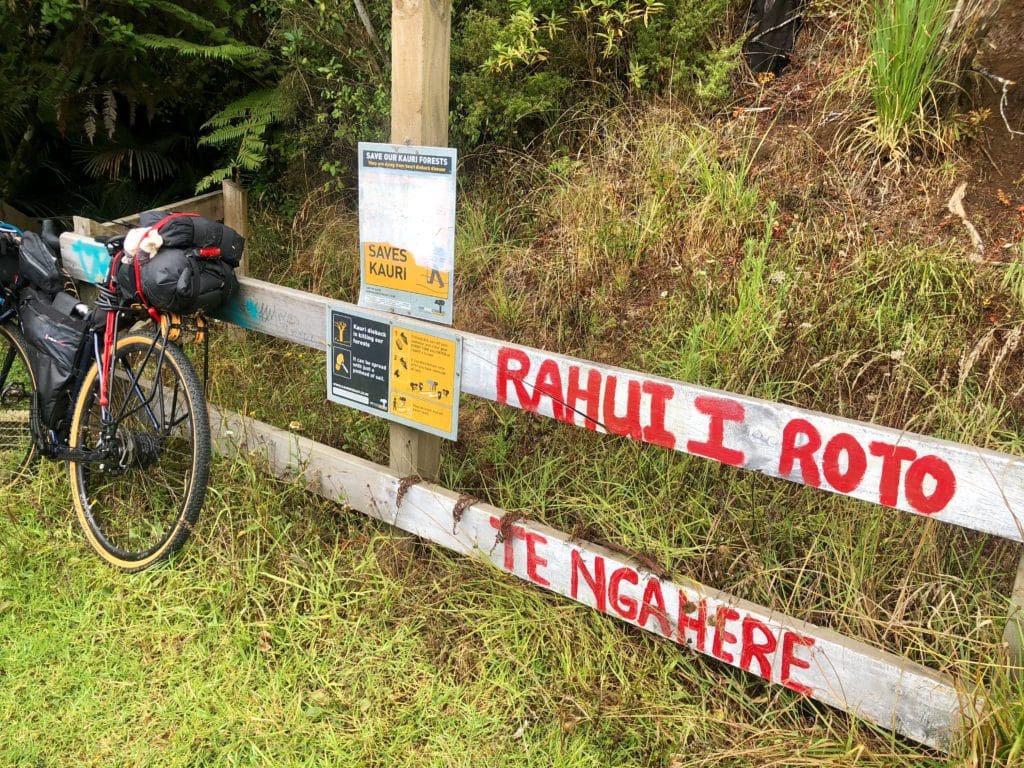
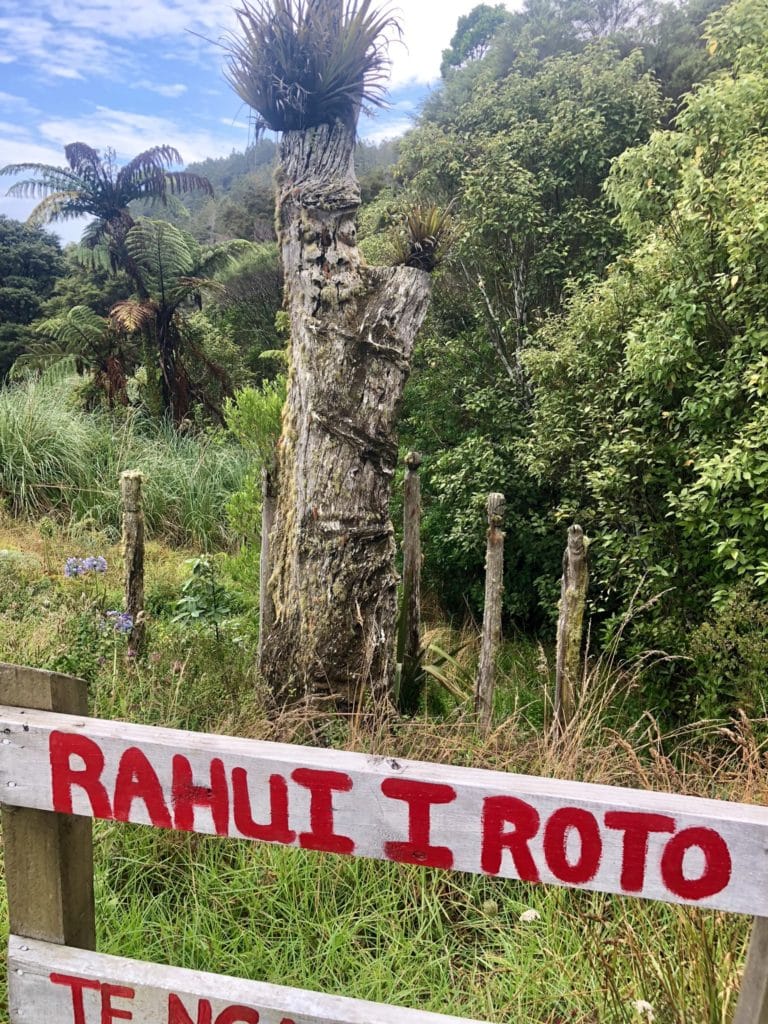
What we saw this afternoon was a place where a local iwi had taken far more urgent steps. They had white washed out that cleaning advice on a government sign and instead had declared a rahui, an area in which they have banned access. At that point of access to the bush there was an old dead tree surrounded by carved posts, signifying some spiritual significance to the place.
Later, Kennedy spotted a house flying a flag he recognised so we stopped. He said it was the Maori independence flag of 1834, designed and first flown as “a sovereign act”, as Kennedy wrote about in this piece in NZ Geographic magazine in 2014. Only six years after the flag was designed the Treaty of Waitangi was signed bringing Maori under British sovereignty. In many ways this history has created much of the rich cultural life of Aotearoa today. But there are still many conflicts yet to be resolved.
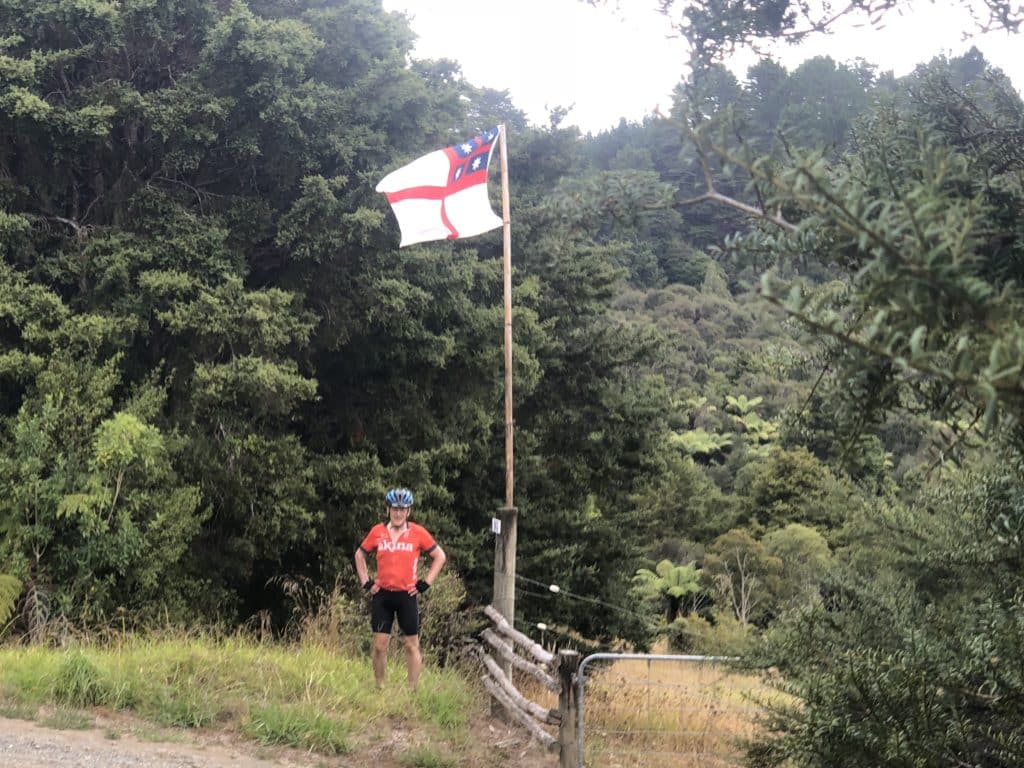
Kennedy, who trained as a marine biologist, is also an excellent riding companion for his knowledge of plants, landscapes and ecosystems. He is constantly scanning left and right as we ride, commenting on what he sees. Some are real delights such as the wild peach and blackberries he spotted, and we scoffed, this afternoon.
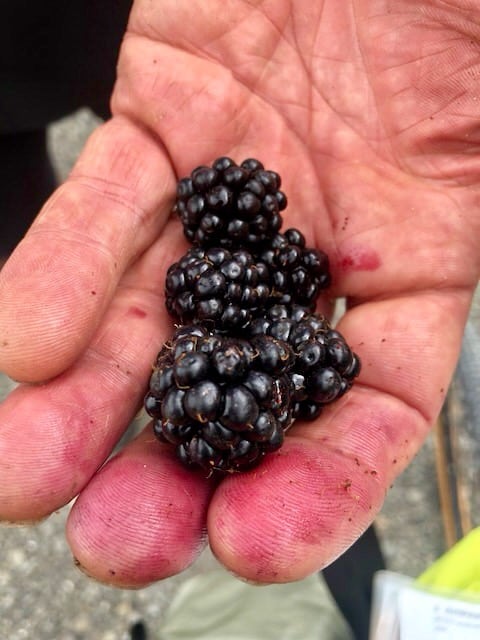
But what about the cycling? you might be asking. Well, that was excellent too. The last 30km down 90 Mile Beach (it is very long but its name is an exaggeration) to Ahipara was splendid and we have some video to offer you when we get fast internet access to upload it. We stopped there for a delicious and huge brunch. Though, that was seriously marred by the espresso machine being out of order. The bottled cold coffee drink, made by CocaCola was a very inferior substitute.
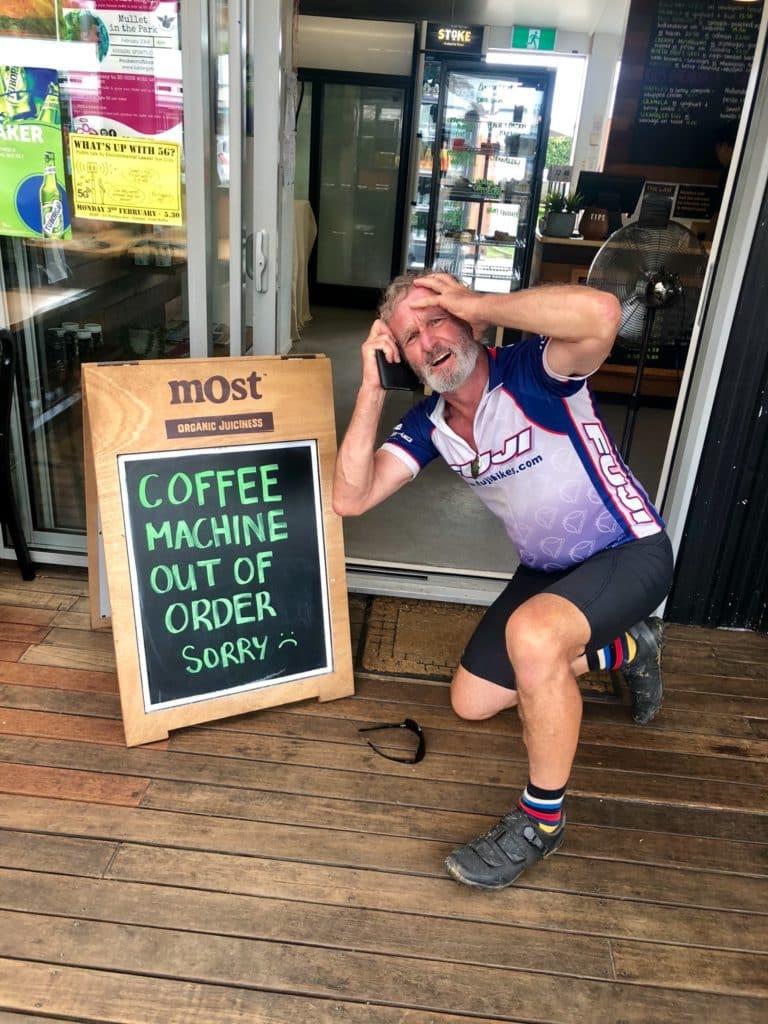
In the afternoon, we rode 65km through beautiful hills and bush to Kohukohu on the Hokianga – note to overseas readers, it is one of the three huge natural harbours along the upper west coast of our North Island. And our TA route will visit all three. It was a delightful but hard ride, with 1,000m of climbing in those 65km.
We’re staying with Sally, a friend of Kennedy’s, in her beautiful old house…and I smell a mouth watering dinner about to be served …so I’ll be back with you tomorrow!
0 Comments